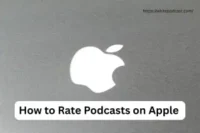10 Easy Video Editing Tips Every Beginner Should Know
Published: 30 Oct 2025
In 2025, video editing has become one of the most valuable digital skills you can learn. From YouTube creators to marketers and influencers, everyone relies on polished videos to grab attention and tell better stories online.
Think about it — a simple clip can turn into a powerful message when edited right. Smooth transitions, good pacing, and clear sound can make even basic footage feel professional.
By the end of this guide, you’ll discover the key video editing tips, beginner tools, and common mistakes to avoid so you can start creating clean, engaging videos — even if you’re completely new to editing.
Why Learning Video Editing Matters in 2025
Video content is everywhere — short clips, ads, vlogs, tutorials, and social posts. Learning to edit opens huge opportunities.
- Videos are the top-performing format on all major platforms.
- Editing boosts engagement and retention for creators.
- Skills are useful for freelancing, marketing, or personal brands.
- Basic editing knowledge helps in any creative or digital job.
- You can start with free editing tools and learn step by step

Best Video Editing Tools for Beginners (Free + Paid)
The right tool makes editing easier and more fun. Start with simple software to learn the basics — most free options already include professional features. Once you’re confident, move to advanced tools for more creative control. types-of-interview-podcasts
🎬 Free Tools (Beginner-Friendly):
- CapCut: Easy to use on mobile or desktop.
- DaVinci Resolve: Free, pro-level color and audio tools.
- iMovie: Perfect for Apple users, simple timeline.
- Clipchamp: Online editor with quick templates.
💼 Paid Tools (For Long-Term Growth):
- Adobe Premiere Pro: Pro choice for YouTubers.
- Final Cut Pro: Fast, smooth, Mac-optimized.
- Filmora: Easy, affordable, great for starters.
Step-by-Step Editing Workflow for Beginners
A clear workflow helps you stay organized and edit faster. Follow these steps every time you start a project — it keeps your videos smooth, consistent, and professional-looking.
🧩 Basic Workflow:
- Plan your video: Know your story and target audience.
- Import clips: Gather all footage in one folder.
- Trim and cut: Remove mistakes or boring parts.
- Arrange clips: Keep the timeline clean and logical.
- Add transitions: Use simple fades or dissolves.
- Adjust color: Fix lighting and add a consistent tone.
- Edit audio: Balance volume and remove noise.
- Add music: Choose tracks that match your mood.
- Insert text: Keep titles short and readable.
- Export video: Use MP4 format and HD settings.
Effective Video Editing Tips for Beginners
Video editing might look technical at first, but it’s all about building rhythm and flow. Even small changes like trimming clips, syncing audio, or adjusting brightness can instantly make your video look professional. Start simple, stay consistent, and focus on clarity over complexity.
The goal isn’t to use every effect — it’s to tell a story that feels smooth and natural. A beginner editor who focuses on timing and clean transitions often creates better videos than someone who overuses filters or motion effects.
Beginner Editing Tips
- Keep it simple: Stick to clean cuts and basic transitions.
- Fix audio and color: Balance sound and brightness for a polished look.
- Add B-roll footage: Use extra shots to make your story more engaging. podcast to mp3 download
Common Mistakes New Editors Should Avoid
Every beginner makes mistakes — and that’s part of learning. But knowing what to avoid early can save you time and make your videos look more professional. Most issues come from over-editing or skipping small but important details like audio balance and pacing.
Focus on keeping your edits natural and clean. Remember, smooth storytelling always beats flashy effects. Avoid these common beginner mistakes:
Editing Mistakes to Watch Out For
- Using too many effects: Flashy transitions can distract viewers.
- Ignoring background noise: Poor audio quality ruins good visuals.
- Forgetting to save projects: Always back up your work.
- Wrong aspect ratio: Check video size for mobile and desktop.
- Exporting in low quality: Stick to HD (1080p or higher).
Bonus: Quick Tips to Edit Faster
Editing can take hours, especially when you’re just starting out. But with the right habits and tools, you can save a lot of time without losing quality. The key is organization, shortcuts, and smart workflow choices.
Small improvements in your process — like naming files or using templates — make a big difference. Try these quick tips to boost your editing speed and stay productive:
Speed Editing Tips
- Use keyboard shortcuts: Learn basic keys for cutting, trimming, and playback.
- Organize your files: Keep clips, audio, and assets in labeled folders.
- Work with templates: Save preset transitions or text styles for reuse.
- Preview often: Check progress as you edit to avoid redoing sections.
- Keep your setup clean: A clutter-free workspace improves focus and flow.
Storytelling Through Editing
Editing isn’t just about cutting scenes — it’s about shaping emotion, mood, and meaning. Every transition, sound, and color choice tells a part of your story. Even with basic tools, you can create a strong emotional impact if your edits follow the rhythm of your message.
Think of editing like visual storytelling — your job is to guide the viewer’s attention. A good edit makes them feel something without them realizing why.
✨ Ways to Tell a Story Through Editing
🎯 Start with a hook:
Grab attention in the first few seconds. Use strong visuals or quick pacing to pull viewers in.
🎵 Use music and pacing:
Match beats, emotions, and transitions to the flow of your story. Music sets the mood — happy, dramatic, or calm.
🎬 Show, don’t tell:
Let visuals carry meaning instead of overusing text or narration. A simple reaction shot can say more than a line of dialogue.
🎨 Keep emotional flow:
Each cut should naturally lead to the next, keeping the viewer connected to the story.
📱 End with impact:
Leave a final moment that lingers — a smile, quote, or sound that wraps the story beautifully.
How to Keep Improving as a Beginner Editor
Video editing is a skill that gets better with practice. The more you edit, the more you’ll understand pacing, flow, and storytelling. Don’t rush the process — growth comes from experimenting, making mistakes, and learning from each project.
The secret to improvement is consistency. Keep challenging yourself with new styles and techniques so your edits never feel repetitive.
🚀 Tips to Keep Growing
- Practice daily: Edit short clips regularly to sharpen your skills.
- Watch tutorials: Learn new transitions, effects, and workflows from YouTube pros.
- Seek feedback: Ask friends or online groups for honest opinions.
- Experiment: Try different genres — travel, vlogs, reels, cinematic edits.
- Analyze others’ work: Study how your favorite editors use pacing and sound.
- Upgrade tools: Move to better software once you’ve mastered the basics.
Conclusion
Video editing may seem complex at first, but every expert started as a beginner. With the right tools, consistent practice, and a creative mindset, you can turn ordinary clips into powerful visual stories.
Start small — edit short videos, explore new styles, and don’t be afraid to make mistakes. Each edit teaches you something new about storytelling, pacing, and creativity.
What is the easiest video editing software for beginners?
Tools like CapCut, iMovie, and Filmora are the easiest to start with. They have simple interfaces and ready-made templates for quick edits.
How can I make my videos look more professional?
Focus on clean cuts, consistent lighting, and background music that matches your story. Also, avoid overusing transitions or effects — simplicity works best.
Do I need a powerful PC for video editing?
Not necessarily. Free tools like Clipchamp or CapCut Web can run smoothly even on mid-range systems. As you move to advanced editing, a faster PC helps.
How long should I practice video editing daily?
Even 30–45 minutes a day is enough to build your skills. Consistency is key — short, regular sessions beat long, irregular ones.
Q1: Which of these is a paid professional video editor?
A) CapCut B) iMovie C) Adobe Premiere Pro D) Clipchamp
Q2: What’s the first step in any editing workflow?
A) Adding effects B) Organizing clips C) Exporting video D) Choosing background music
Q3: What’s a common mistake beginners make?
A) Using too many effects B) Practicing daily C) Keeping edits simple
Answers: 1️⃣ C | 2️⃣ B | 3️⃣ A

- Be Respectful
- Stay Relevant
- Stay Positive
- True Feedback
- Encourage Discussion
- Avoid Spamming
- No Fake News
- Don't Copy-Paste
- No Personal Attacks

- Be Respectful
- Stay Relevant
- Stay Positive
- True Feedback
- Encourage Discussion
- Avoid Spamming
- No Fake News
- Don't Copy-Paste
- No Personal Attacks






